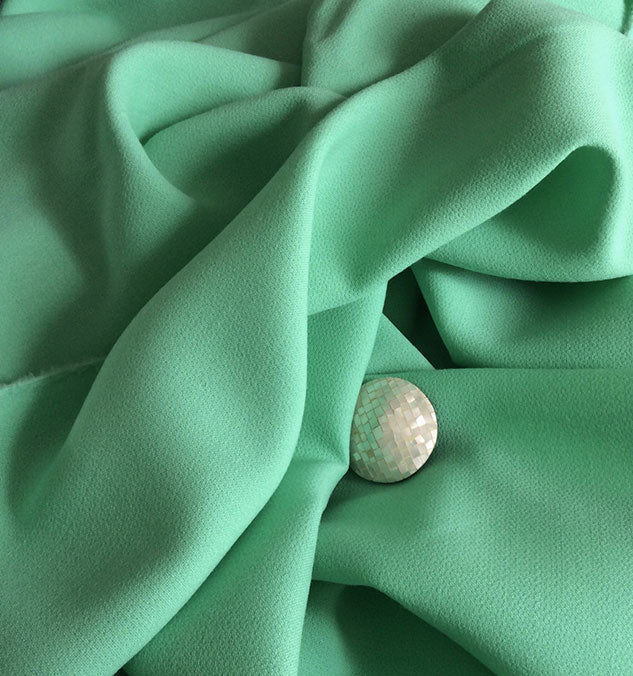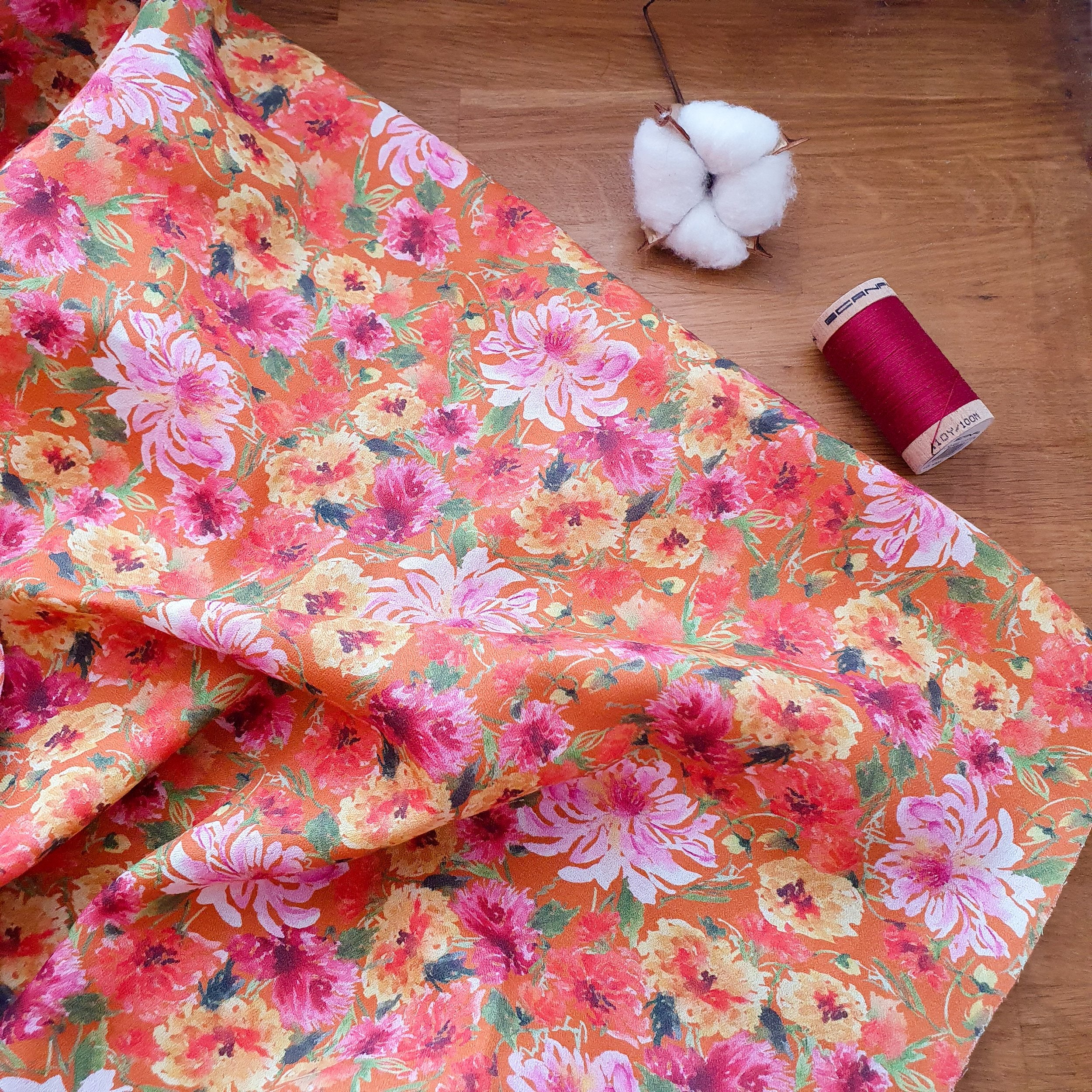The fashion world is filled with varied fabrics that each have unique characteristics. One such fabric is crepe, loved for its delicate texture and timeless elegance.
In this article, we will give you our opinion on crepe fabric, describing what it is, how it is made and where it can be found, stating the occasions when it can be worn and the benefits of this magnificent fabric.
What is crepe fabric?

Crepe is a fabric with a grainy and slightly wrinkled texture. It is recognizable thanks to its folds and wavy surface, which give it a unique appearance. The word “crêpe” comes from the French “crispus”, which means “curly” or “crisped”. Crepe can be made from different fibers, such as silk, cotton, polyester or rayon.
How is crepe fabric made?
Crepe making is a complex process that involves several steps. First, the threads are twisted and intertwined to create a grainy texture. Next, the fabric is treated with chemicals or mechanically to give it its characteristic wrinkled appearance. This treatment can vary in intensity, resulting in different varieties of crepe, ranging from light and fluid crepe to thicker and textured crepe.
Thanks to its light and fluid texture, it is suitable for many types of clothing. Crepe dresses, skirts, blouses and scarves are popular for their elegance and flattering drape. In addition, crepe has a certain elasticity, which makes it comfortable to wear and allows great freedom of movement.
Where to find crepe fabric?
Crepe is widely used in the fashion industry and is available in many fabric and haberdashery stores.
You can also find a wide selection of crepe clothing in fashion boutiques, as well as in the collections of many famous designers.
Online, many specialized sites, or not necessarily like Zara for example, which allows you to choose from a multitude of options.
For what occasion do we wear crepe fabric?
Crepe fabric is often chosen for special occasions where elegance is required. Its slightly crinkled texture gives it a refined and sophisticated look, making it a popular choice for formal events such as weddings, cocktail parties or formal evenings.
Long crepe dresses are particularly appreciated for their timeless elegance and fluid movement during dance evenings.
Additionally, crepe can also be used for everyday clothing, such as blouses or skirts, to add a touch of casual elegance to an outfit.

The advantages of crepe fabric
Crepe fabric has many advantages. One of the major advantages of crepe is its slightly crinkled texture, which gives it a unique appearance and natural elegance. This texture allows it to drape well over the body, creating fluid and flattering lines.
Crepe fabric also has the advantage of being easy to maintain. Depending on the fiber used, it can often be machine washed at a moderate temperature or hand washed, making it practical for everyday use.
The difference between crepe fabric and silk chiffon
Now, let's compare crepe fabric to silk chiffon, another popular fabric. Although the two fabrics share similarities in terms of delicate textures, they have distinct characteristics that set them apart.
Crepe has a grainier, slightly crinkled texture, while silk chiffon has a smooth, silky surface. Silk chiffon is considered more luxurious and delicate, while crepe offers increased wrinkle resistance and greater durability.
In terms of drape, crepe has a more structured hold, while silk chiffon is more fluid and vaporous. Crepe is therefore better suited to garments that require a certain structure, while silk chiffon is frequently preferred for lighter, more airy outfits.
When it comes to wearing occasions, silk chiffon is typically associated with formal events and evening wear, while crepe can be used in a wider variety of contexts, from special occasions to everyday wear.
How to maintain crepe fabric?
Crepe fabric requires specific care to preserve its delicate texture and elegant appearance.
Here are some tips for taking care of your crepe clothes.
Before washing your crepe garment, be sure to read the specific care labels carefully.
Some crepes can be machine washed at a gentle temperature, while others may require hand washing.
Air drying is often recommended for crepe to preserve its texture and appearance. Avoid using a dryer, as this can cause the fabric to shrink and warp.
To dry your garment, lay it flat on a clean, flat surface. Avoid exposing it to direct sunlight, because this can alter the colors.
If the crepe is wrinkled after washing, it may need to be gently ironed. Set the iron to a low or medium temperature and be sure to protect the fabric by placing a thin cloth between the iron and the crepe.
Avoid exposing it, leaving the iron in direct contact with the fabric for a long time, as this may damage it.
By following these care tips, you will be able to maintain the beauty and quality of your crepe clothing for a long time!
Did you like this article? Discover our opinion on cotton satin !